By Sattva Consulting’s Research Advisory team: Anisha Lalvani, Research Consultant, Geetika Dang, Sr Research Consultant and Sansidha Pani, Sr. Research Consultant
The world has conducted its most extensive vaccination program in history with the COVID-19 vaccination drive. As of 2nd December 2021, more than 8.05 billion doses have been administered across 184 countries, amid worries that existing vaccines might prove ineffective to tackle the newest variant —Omicron.
However, despite significant progress, the world is still experiencing high vaccine hesitancy.
India recently celebrated the administration of more than 1 billion vaccination doses as of 2nd December 2021, although only ~50.5%[1] of the eligible population (18+) has received both doses.
This article explores the ground realities behind these feats and shares insights and solutions to address vaccine hesitancy with stakeholders tackling similar issues globally.
Challenges in Vaccine Adoption: An Indian Perspective
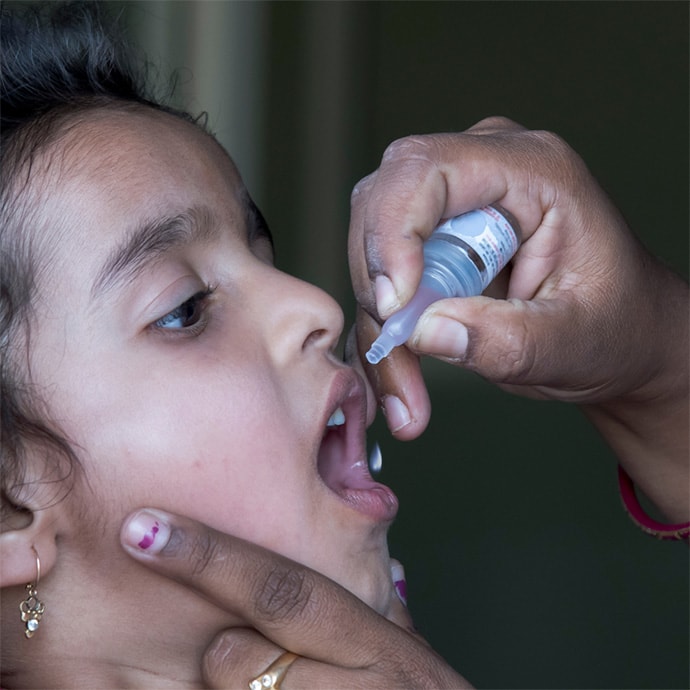
India’s successful polio vaccination drive.
India has run large-scale, legacy immunization schemes, largely child-focused. However, an adult vaccination drive on the scale of COVID-19 is an entirely new experience for its public health machinery, facing a host of challenges such as:
- Despite procuring ~87% of its vaccine supply from the domestically manufactured Covishield, India faced problems matching vaccine supply with the high pace of administration needed to achieve nationwide coverage.
- Logistical challenges of dispensing the vaccine to a population as geographically dispersed and varied as India’s have been high.
- Like other public health stakeholders, the Government of India (GoI) constantly faces challenges from emerging variants.
- Powered by misinformation, mistrust, and inconvenience, the most critical challenge has been vaccine hesitancy. A lack of understanding of the vaccine and the diseases’ severity increased fear of side effects. Moreover, in a country such as India, vaccine hesitancy is entrenched in social and religious values. Local myths advocate traditional therapies over the vaccine.
Sattva’s 5C Framework on Vaccine Hesitancy
WHO developed the ‘Complacency, Convenience and Confidence’ model (3Cs) as the basis to understand vaccine hesitancy, which has been enhanced with a Working Group Matrix model.
Inspired by this 3C framework and based on our understanding of on-ground Indian realities, Sattva developed a 4Cs model to understand hesitancy and slow vaccine uptake rates. Given recent cases of high complacency towards the second dose, the model has been further expanded to a 5Cs model, as depicted below:
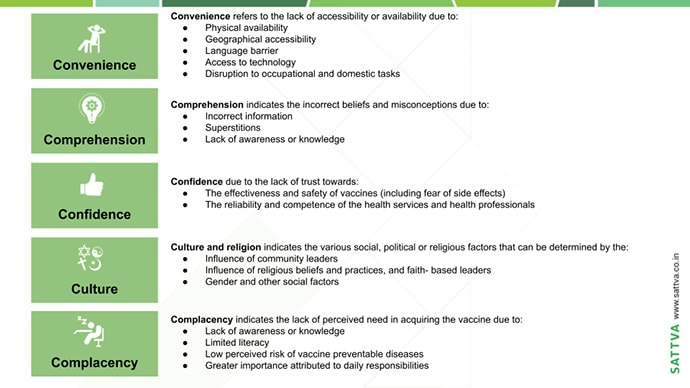
Figure 1: Sattva’s 5C Research Framework on Vaccine Hesitancy
Levers for Vaccine Adoption – 2 Primary research studies
With inputs from subject matter and policy experts across relevant thematics, Sattva developed a pro bono back-end data system to generate data and insights around vaccine access, barriers, and hesitancy questions among vulnerable communities.
Below are details from two field studies leveraging this product framework:
-
Landscape Study with Piramal Swasthya conducted in June and July 2021
This study was conducted across 25 aspirational districts (under-developed areas stipulated by the Govt. of India) in 7 states of India and had 863 respondents across demographics. While the sample is not statistically adequate to generalize, the analysis provides vital insights on key vaccine hesitancy trends.
Key insights:
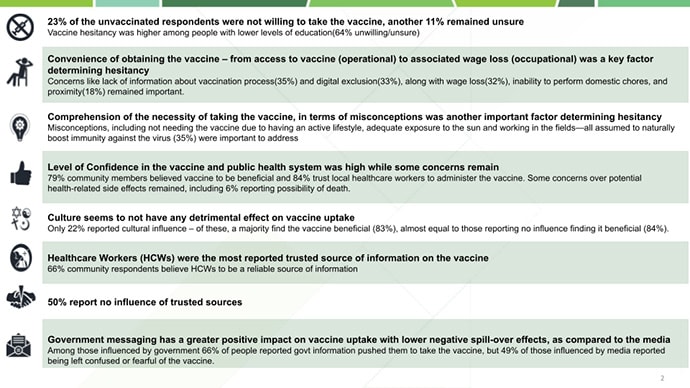
Figure 2: Key Insights from Piramal Swasthya Study
-
Landscape Study with Abhyudaya, a project under the Keshava Kripa Samvardhana Samiti (KKSS) in August 2021
This study was conducted across urban slums in Bengaluru and peri-urban and rural communities in Karnataka and surveyed 1590 residents.
Key insights:
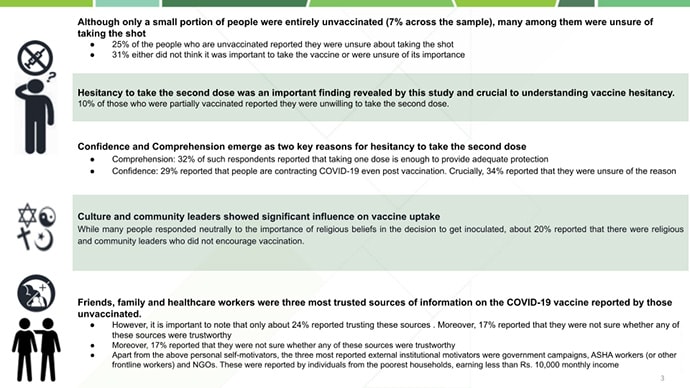
Figure 3: Key Insights from Abhyudaya Study on Vaccine Hesitancy
In addition, two studies with a collective sample size of ~30,000 respondents on vaccine hesitancy are in the pipeline for completion by February-March 2022 with nonprofits CAC Vihara (in the state of Andhra Pradesh) and Project Swaraksha (Anaxee Digital Runners) (in the states of Uttar Pradesh and Maharashtra). These will be conducted in association with ACT Grants, a non-profit alliance of 100+ investors who set up a USD 13 million+ fund to combat the pandemic.
Rising Second Dose Hesitancy: A Cause for Concern?
With ~50% of the country having either only one dose or not being vaccinated at all, India’s present situation holds the potential for rising ‘vaccine complacency’ possibly due to the falling severity of the disease.
Superficially, the national picture does not look bad, with just 3% of those eligible for the second dose missing their slot. However, 3% = ~10 million people missing their second dose in absolute numbers. The real problem relates to developmental inequities at state and district level data. The heat map below, based on data from 15th October 2021, shows that 98 out of the total 748 districts ( with a population of 192 million) have a ‘large gap’ in second dose coverage, i.e., >20% lower number of second doses administered than the estimated target number. Meanwhile, 144 districts (population= 261 million) show a ‘medium gap’ of 10-20% between second doses and the estimated target.
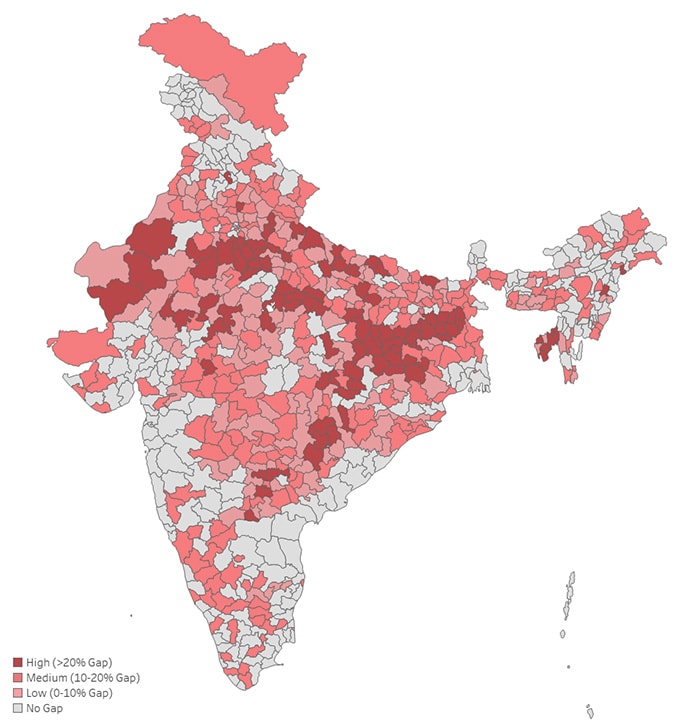
Figure 4: Heatmap highlighting low (0-10%), medium (10-20%), and high (>20%) gap between those due to getting the second dose vs. actual second dosers
This map shows that general trends towards second dose hesitancy are located in states with high tribal populations—such as Jharkhand and those with low-income populations such as Bihar and Uttar Pradesh.

Table 1: State-wise share of districts with gaps between those due to getting the second dose vs. actual second dosers
With increasing reports of such high second dose hesitancy, the GoI made concerted efforts to push vaccine uptake towards this end. As a result, as of 7th December 2021, ~50.5% of the eligible population across India has received both doses, an improvement by nearly 20% since mid-October.
Learnings indicate the need for governments to specifically target second dose hesitancy, towards which GoI can play a key role.
Solutions to address Vaccine Hesitancy: A Call to Action
Sattva proposes some key solutions for stakeholders in India and other countries tackling similar problems. These are based on the two primary studies described above and extensive secondary research. The solutions are broad and can be applied to multiple contexts.
- Countries such as India can leverage well-developed networks of grassroots community health workers to better understand localized factors leading to complacency/hesitancy and archetypes of people left behind in vaccination drives.
- India and other countries facing similar situations could draw lessons from the Biden administration advocating vaccine mandates to curb second dose hesitancy. These enforce businesses with 100 or more employees to vaccinate their staff or face regular testing by January 4th, 2022, thereby covering ~66% of the country’s working population. We see that the Union Territory of Pondicherry and the state of Karnataka have recently imposed such mandates.
However, large-scale implementation of such mandates in countries like India and the rest of the global south, with informal and unregulated economies will prove problematic. They might, in turn, pose a fresh series of challenges for governments here in monitoring and regulation.
Further research on the potential applicability of vaccine mandates in these regions to promote vaccine adoption would enhance knowledge within the solutions ecosystem. In addition, they would help transition to a post-Covid world or one where it does not pose a significant threat, as it still does today.
How do you see this applying to global south nations you work in?
References
- Bloomberg – COVID Vaccine Tracker Vaccine Distribution. (2021). Bloomberg.
- Mandavilli, A. (2021, November 30). Will the Covid Vaccines Stop Omicron? Scientists Are Racing to Find Out—the New York Times.
- Zee Media Bureau. (2021, July 3). As Moderna readies to make an entry into India, list of other COVID-19 vaccine options available. Zee News.
- Bhatia, G., Dutta, P. K., & McClure, J. (2021, November 21). India: the latest coronavirus counts, charts and maps. Reuters.
- Chauhan, V. S. (2021, November 23). Covid-19: Scepticism, hesitancy keep second dose candidates away in Lucknow. The Times of India.
- COVID Live Update: 256,476,472 Cases and 5,150,361 Deaths from the Coronavirus – Worldometer. (2021, November 19). Retrieved November 10, 2021, from
- Mullick, J. (2021, November 17). For 1st time, number of fully jabbed surpasses partially vaccinated. Hindustan Times.
- MoHFW | Home. (2021). MoHFW, GoI.
- Choudhary, O. P., Choudhary, P., & Singh, I. (2021). India’s COVID-19 vaccination drive: key challenges and resolutions. The Lancet Infectious Diseases, 21(11), 1483–1484.
- Choudhary, O. P., Choudhary, P., & Singh, I. (2021). India’s COVID-19 vaccination drive: key challenges and resolutions. The Lancet Infectious Diseases, 21(11), 1483–1484. https://doi.org/10.1016/s1473-3099(21)00567-3
- Subramanian, S. V. (2021). India faces a challenge with its mass vaccination efforts. The Lancet Global Health, 9(9), e1201–e1202.
- (2021b, June 3). India’s challenges with covid-19 vaccination. The BMJ.
- The Third Wave of Covid-19 looms Large in India. Can it be Brought Under Control? (n.d.). DayToDay. Retrieved November 19, 2021, from
- Breuninger, K. (2021, November 18). Biden’s Covid vaccine mandate will likely go to the Supreme Court. Here’s how the courts have ruled before. CNBC.
- (2021, November 22). ACT Grants.
- Correspondent, H. T. (2021b, December 4). Vaccination mandatory to visit apartments, says Karnataka CM. Hindustan Times.
- News Desk. (2021, December 5). Puducherry Makes Jab Compulsory as Omicron Triggers Alert. Should Rest of India Now Follow Suit? | EXPLAINE. News18.
[1] Sattva analysis based on data from COWIN— an Indian government web portal for COVID-19 vaccination registration, owned and operated by India’s Ministry of Health and Family Welfare.